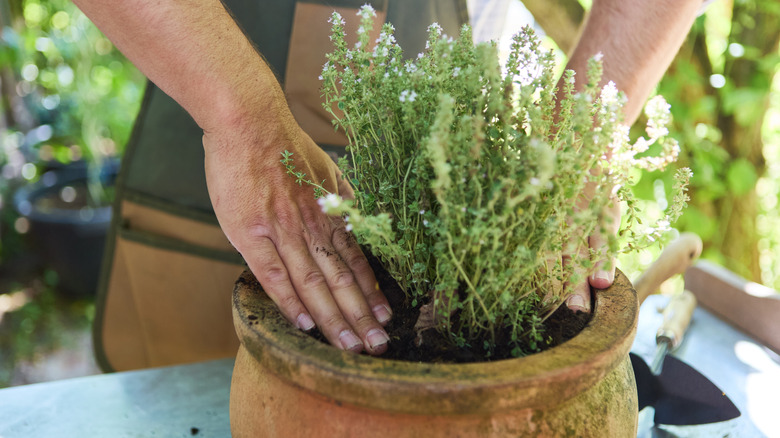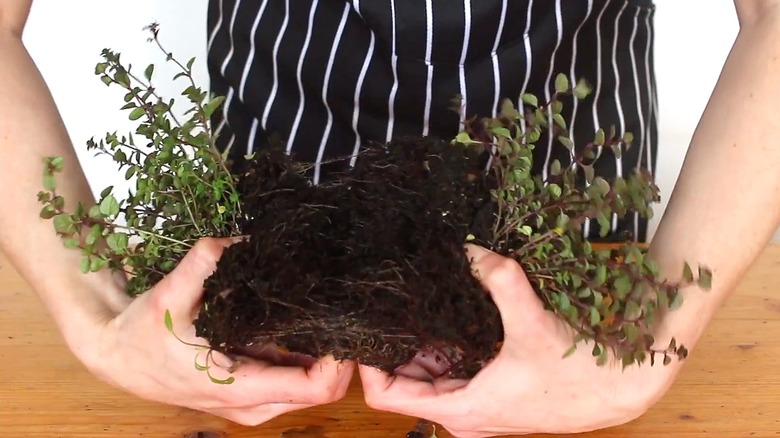The Easy Way To Divide Thyme Plants For An Endless Supply
It may take a little bit of work to get started growing your own herbs, but once healthy plants propagate, you'll always have access to fresh ingredients. This isn't just limited to people who have yards or live near community gardens; folks who live in apartments can grow herbs in containers. Thyme is a great herb to start with because it's commonly used and easy to keep alive. But unless you have a lot of patience, you should avoid growing thyme from seed because it has very slow germination rates. It is much easier to divide thyme to propagate it. You'll have an endless supply because you can always grow new plants as long as you have at least one healthy plant. Then, just follow the tips and tricks for growing thyme.
The best time to divide thyme is the spring or early fall, because those seasons allow the plant to establish itself before the frost of winter or dry days of summer. As for tools, a hand trowel or knife will help you get the job done faster, but if you don't have one, you can put on some gardening gloves and divide the plant with your hands. But before you get started, you need to know which parts of the plant you can separate without harming it. Thyme tends to grow horizontally, creating patches of dense ground cover. If you look closely, you'll see bunches of stems connected to the same root ball. To divide thyme, separate those clusters with their root systems attached. You'll only need one cluster to produce a new thyme plant in a separate pot or garden.
Tips on how to divide thyme
To divide thyme, you first need to dig it up. Carefully lift the bunch of stems and leaves, and dig around with enough space to make sure you're not detaching them from their roots. Try to be as gentle as you can to reduce damage to the plant, and remember that the root system needs to be relatively intact when you transfer the plant to a new garden or container. Thyme roots can extended between 6 and 12 inches deep and up to 24 inches wide, so you'll need to dig accordingly to preserve the root system. After you've dug around the plant, lift it from the ground with your hands around the root ball. If you lift by the stems, they will probably break
Before replanting the thyme, shake off the excess soil clinging to the roots. Then dig a small hole in a new patch of soil and place the plant inside, surrounding it with dirt. Thyme needs generous watering after it is replanted, but once established, it only needs to be watered about once a week. If your thyme dries out despite regular watering, you can add gravel to the soil to improve the drainage. It'll also need about six hours of sun daily, good drainage, and regular pruning. After thyme flowers, make sure to prune the dead flower heads. The herb is perennial, so you don't have to worry about putting new plants in the ground each spring, and the flowering thyme should attract pollinators to your yard.

